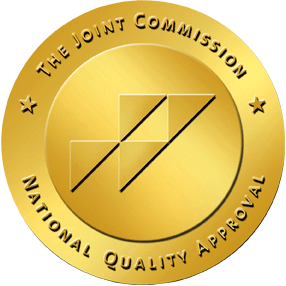Social anxiety disorder (SAD) isn’t just shyness. It’s a deeply distressing condition, defined by intense fear or discomfort in social situations that lasts at least six months and significantly impacts daily life. While it’s normal to experience a fluttering heart, sweaty palms, and an uneasy stomach in certain situations, SAD is a very different thing. And it’s becoming increasingly more common each year.
Research shows that around 15 million U.S. adults experience SAD each year, totaling 7.1% of the population. As staggering as that number is, it’s likely that the number of people with SAD is even higher, especially among adolescents, where the disorder often begins. Let’s look closer at social anxiety, the reasons why it’s rising, and why it hits teens and young people especially hard.
What Is Social Anxiety? How Is it Different from Normal Anxiety?
Everyone gets anxious from time to time, such as before a presentation or first date. This type of “normal anxiety” is a natural response to stress, and it usually fades once the situation passes. But when those fears become overwhelming, persistent, and start interfering with daily life, it may be more than just nerves. That’s when we enter the territory of social anxiety disorder.
SAD is an intense, persistent fear of being judged, embarrassed, or negatively perceived in social situations. For people living with SAD, everyday activities like speaking up in class, eating in public, or making small talk can be terrifying. This disorder is typically diagnosed during the teen years and involves symptoms like the following:
- Physical symptoms: Sweating, racing heartbeat, trembling, upset stomach, or blushing
- Emotional distress: Extreme self-consciousness, dread before social events, or fear of humiliation
- Avoidance behaviors: Skipping classes, avoiding work opportunities, or withdrawing from friends to escape social interactions
Social anxiety disorder differs from normal anxiety in the sense that it’s persistent, lasting 6 months or more, prevents participation altogether, and is present in many or most social interactions. Normal anxiety, on the other hand, involves short-term nerves that fade once the stressful event is over, is usually tied to a specific situation, and doesn’t interfere with your everyday life.
Why Social Anxiety Is Rising—and It’s Hitting Teens Especially Hard
Soaring Rates Among Young People
A global 2020 study found that 36% of young people (aged 16–29) in seven diverse countries (Brazil, China, Indonesia, Russia, Thailand, US, and Vietnam) showed signs of SAD. This reminds us that SAD is not just a problem in the U.S.; it’s affecting young people across the globe. Alarmingly, 90% of new cases emerge by age 23. This research makes it clear that social anxiety is rising—and often early.
Social Media’s Silent Impact
Social platforms offer connection but at a cost. The constant swirl of idealized images and digital performance puts pressure on self-worth and social skills development. For many teens, spending formative years online may stunt confidence in face-to-face interaction.
The Pandemic Effect
COVID-era lockdowns rewrote social norms. Virtual communication became the default, and many, especially youth, found in-person interaction anxiety-inducing upon returning to school or work.
Societal Pressures and Material Expectations
Freed from survival-based worries, today’s generation faces amplified pressures around success and appearance. This shift toward materialism and image-focused culture is linked to growing anxiety and self-judgment.
Who’s Most Affected: Demographic and Gender Trends
Social anxiety crosses all lines but shows some patterns. There’s a higher prevalence in women (8.0%) compared to men (6.1%). Women also often experience SAD in professional contexts (e.g., job interviews), while men may face it more around dating.
Individuals with lower education levels or living in rural areas show elevated rates of SAD. While the nature of this relationship is complex, it’s believed these higher rates could be due to the fact that rural areas often face limitations in access to mental health services, educational opportunities, and support networks.
At the same time, residents of some high-income countries also tend to have higher SAD rates. For example, the estimated lifetime prevalence of SAD is 5.5% in high-income countries, compared to 1.6% in low/lower-middle-income countries.
These trends highlight how social context, identity, and expectations intersect with mental health.
Turning Awareness into Action
SAD is more than just fear; it can deepen isolation, fuel depression, and even lead to substance misuse. That’s why understanding its causes is critical. Fortunately, SAD is a treatable disorder, and many people are able to find real relief with the right combination of support, therapy, and in some cases, medication.
Proven treatments for social anxiety include therapy (especially cognitive behavioral therapy), medications like antidepressants and beta blockers, and lifestyle and holistic support. Acceptance and commitment therapy (ACT) and support groups can also be effective in helping individuals cope with their symptoms and reduce avoidance behaviors.
Because social anxiety typically starts young, early recognition and care can rewrite its trajectory, helping individuals reclaim confidence before avoidance patterns set in.
Treatment for Social Anxiety Disorder in Santa Rosa, CA
Social anxiety disorder continues to affect more people—especially young adults—in our increasingly digital and pressure-filled world. But it’s not an inevitable path. With empathy, understanding, and effective support, individuals can overcome social fears and reconnect with community, purpose, and joy.
At Pura Vida Recovery, we specialize in compassionate, evidence-based mental health and addiction care. If social anxiety is holding you or a loved one back, reach out to us at (707) 879-8432 to see how we can support you with therapy, peer groups, or holistic treatment.





